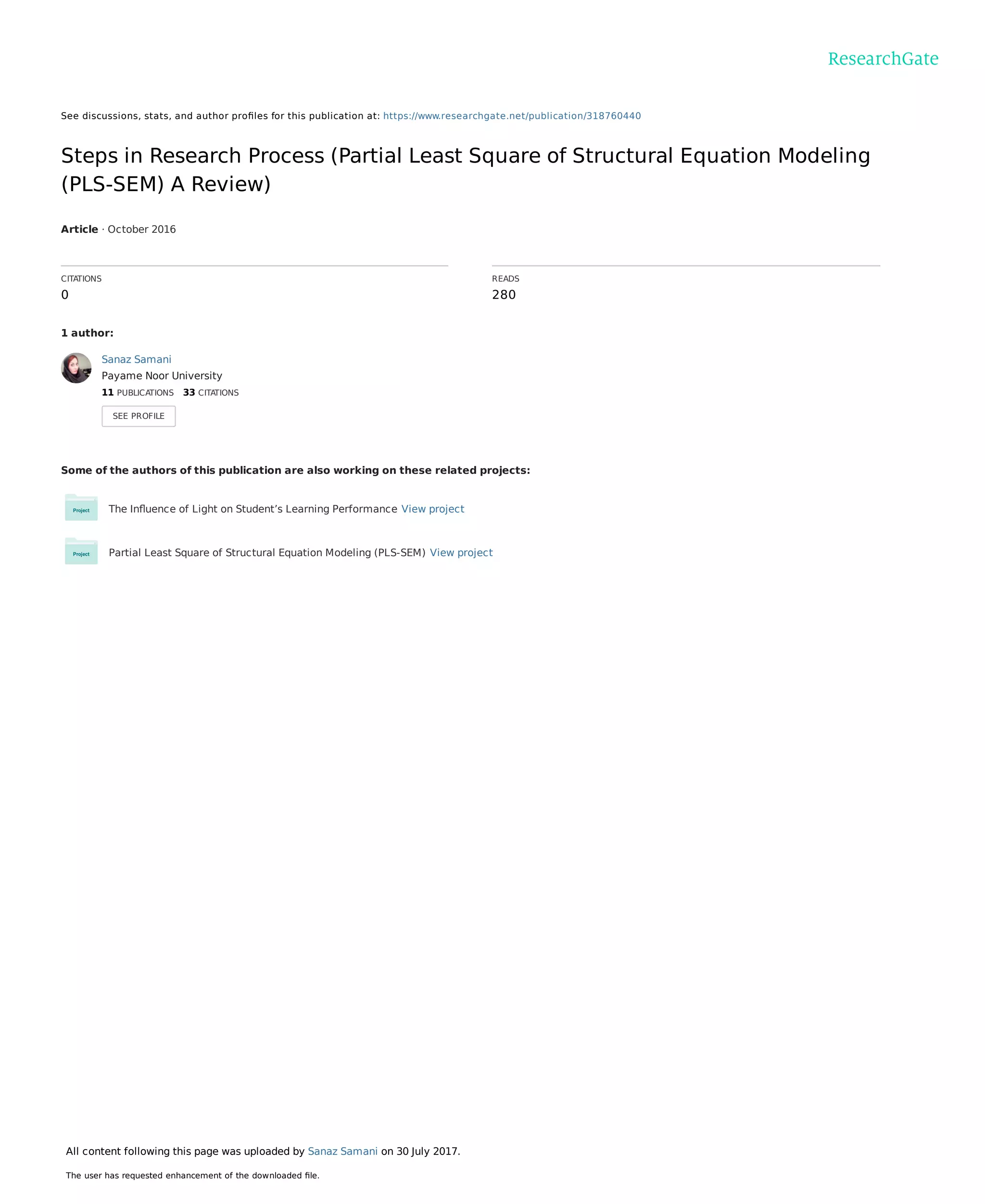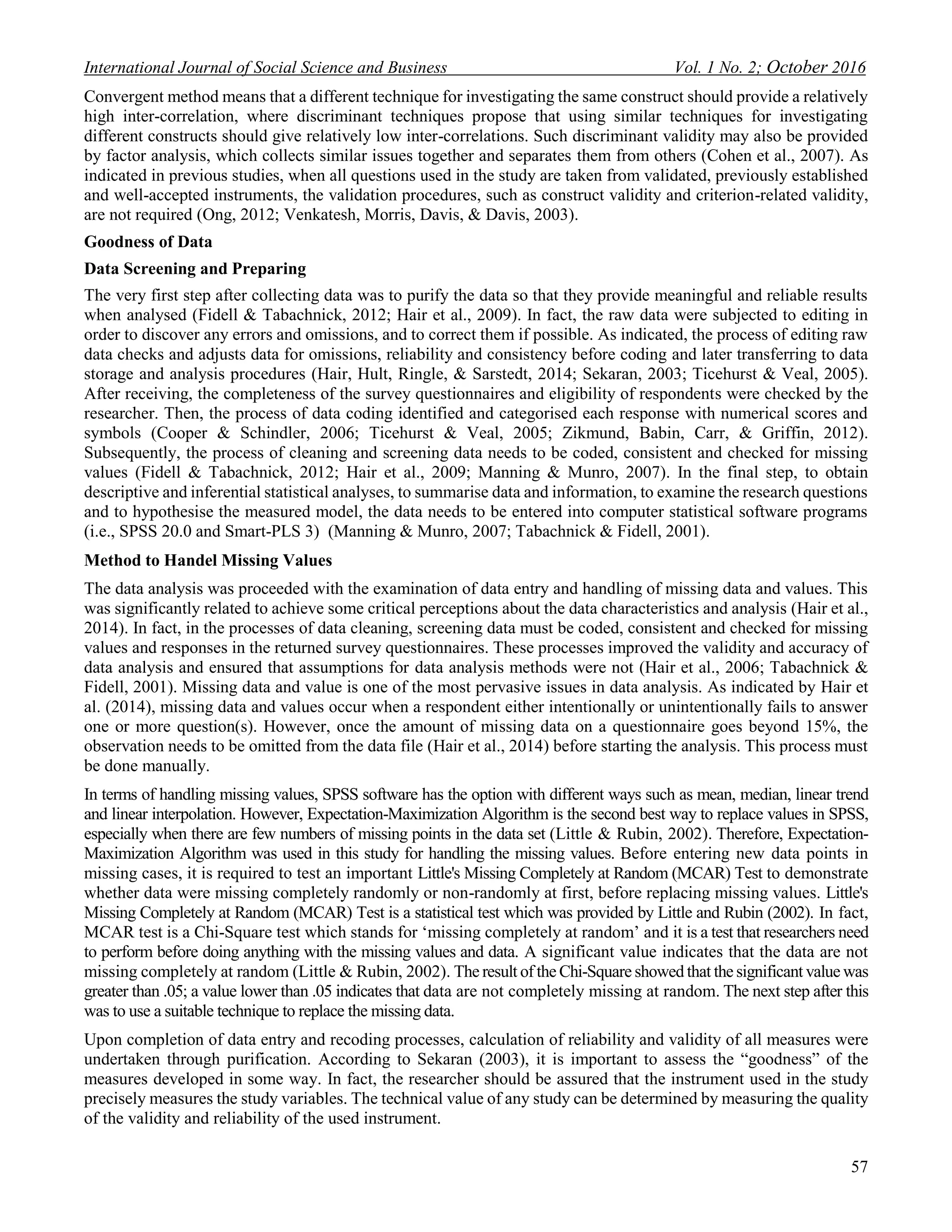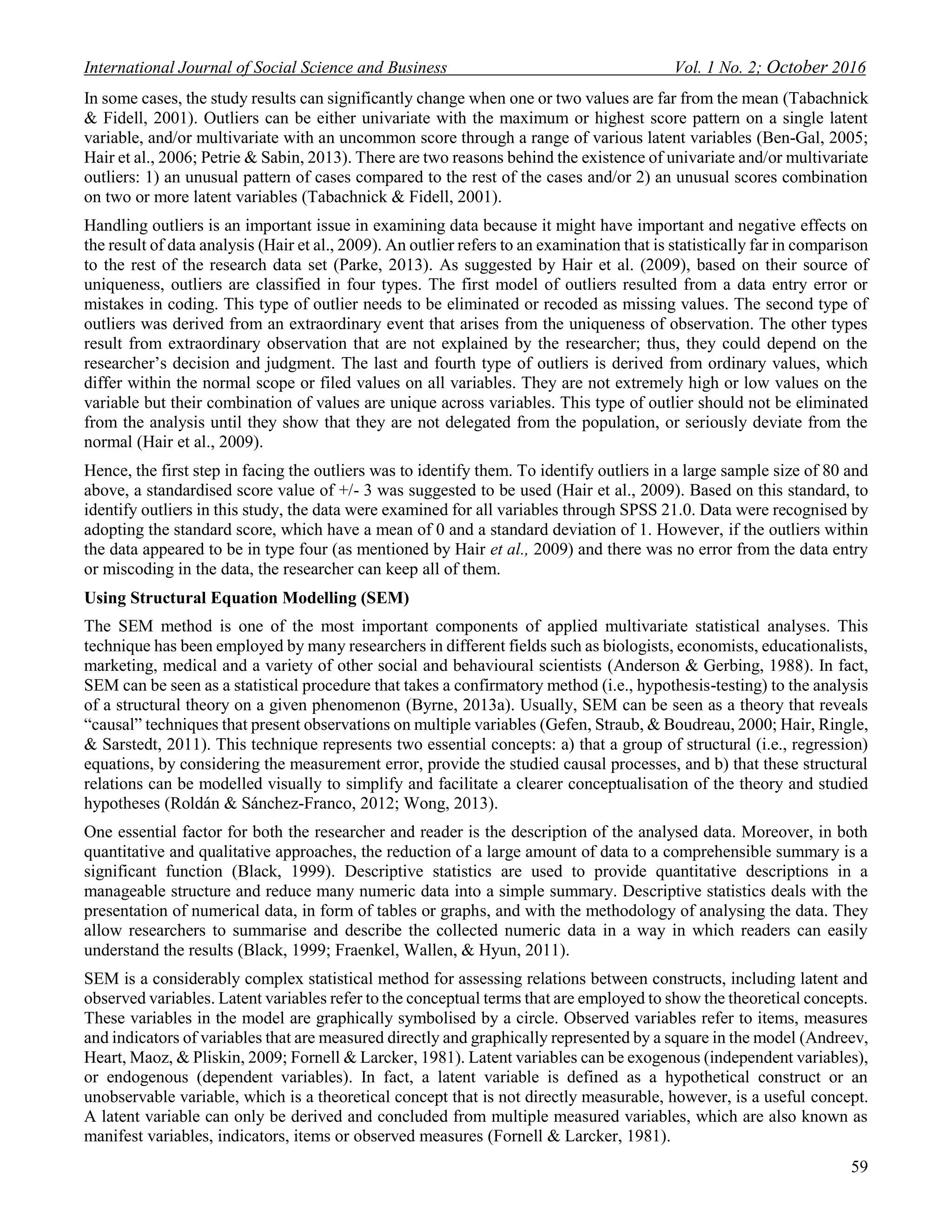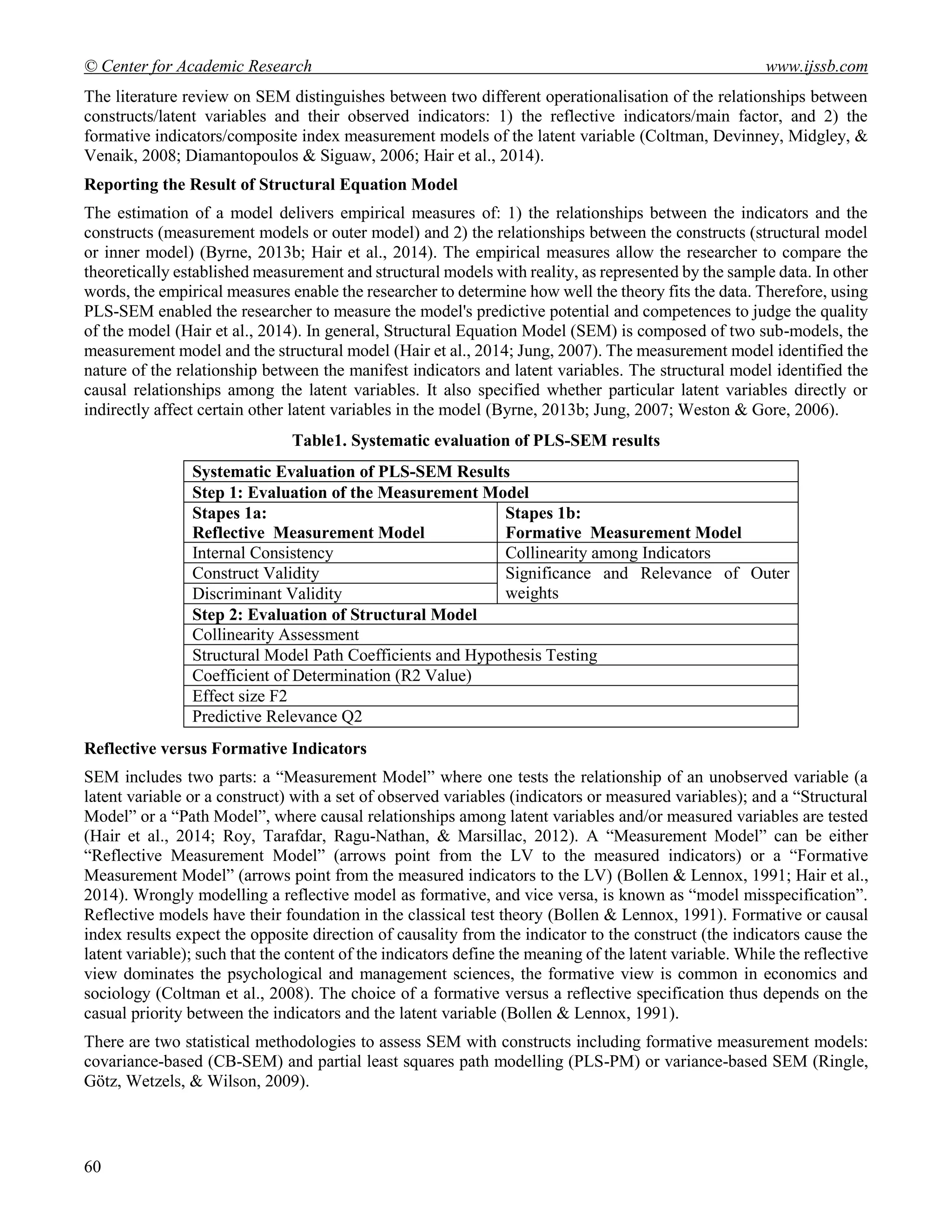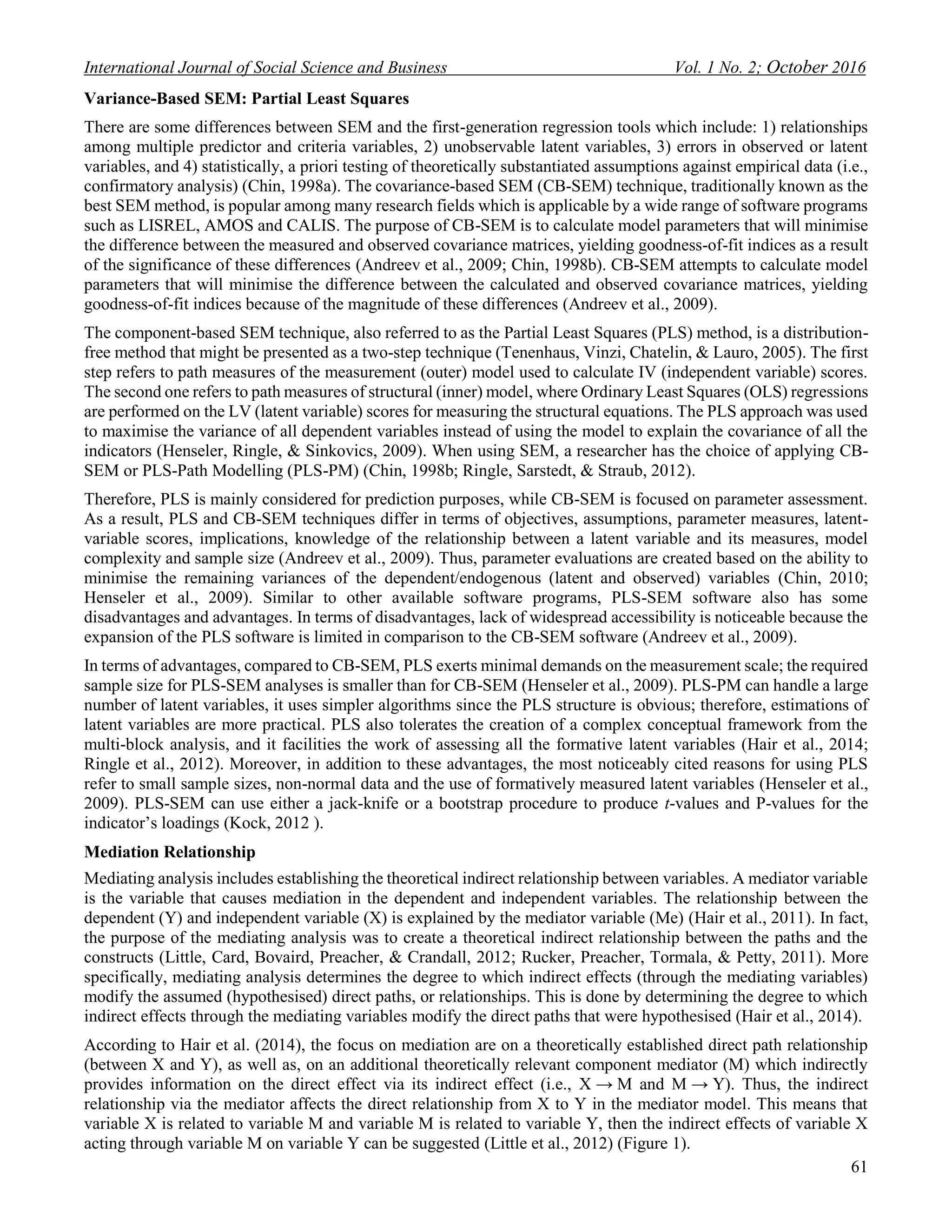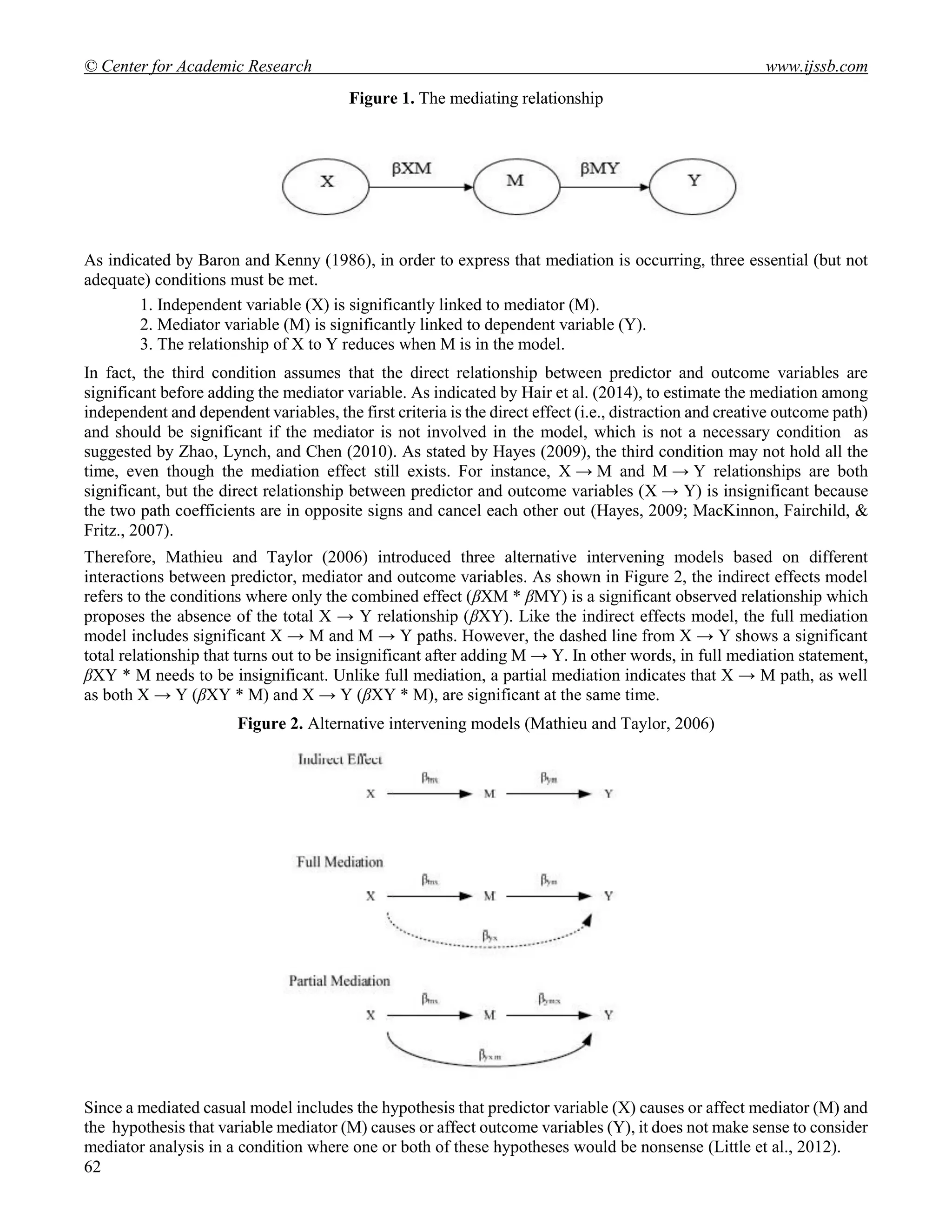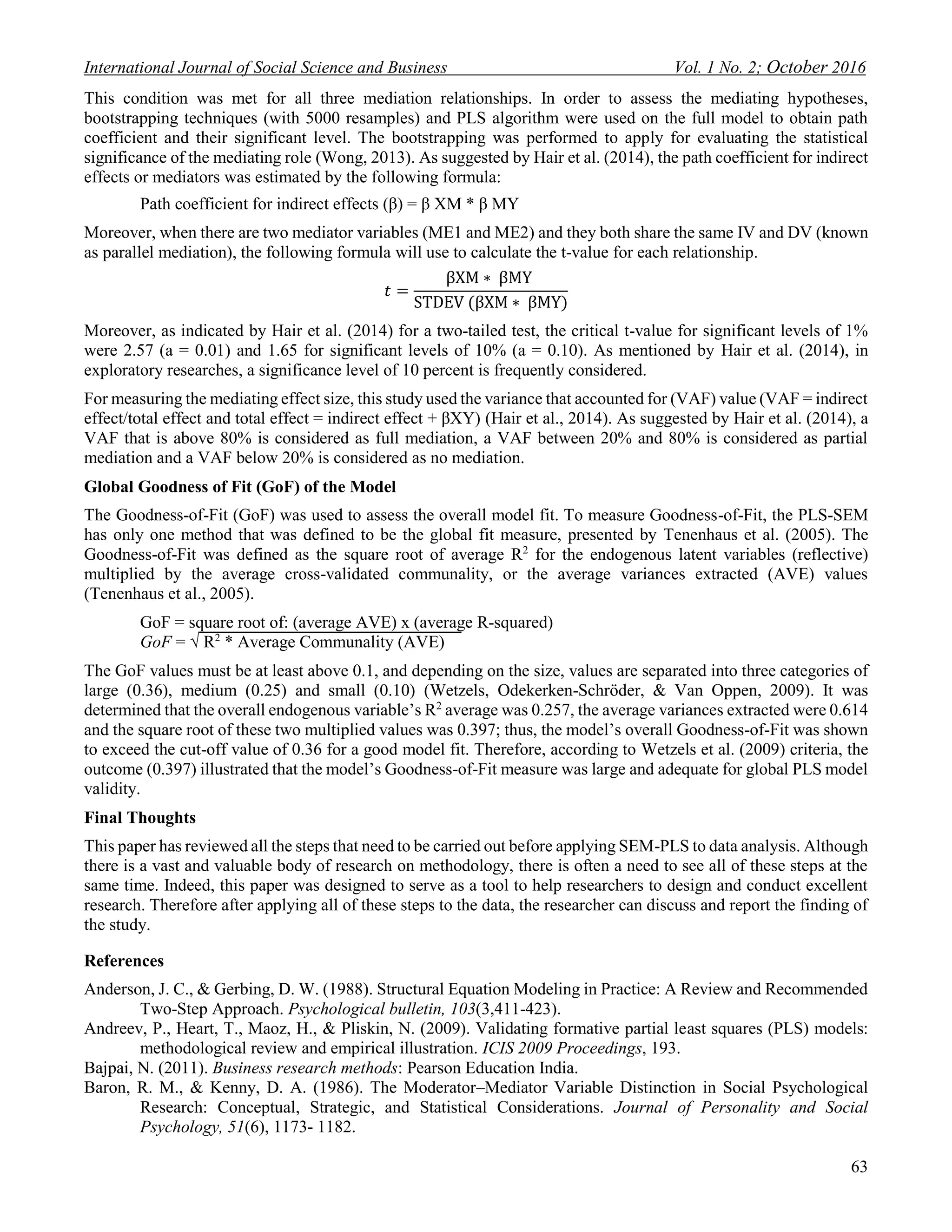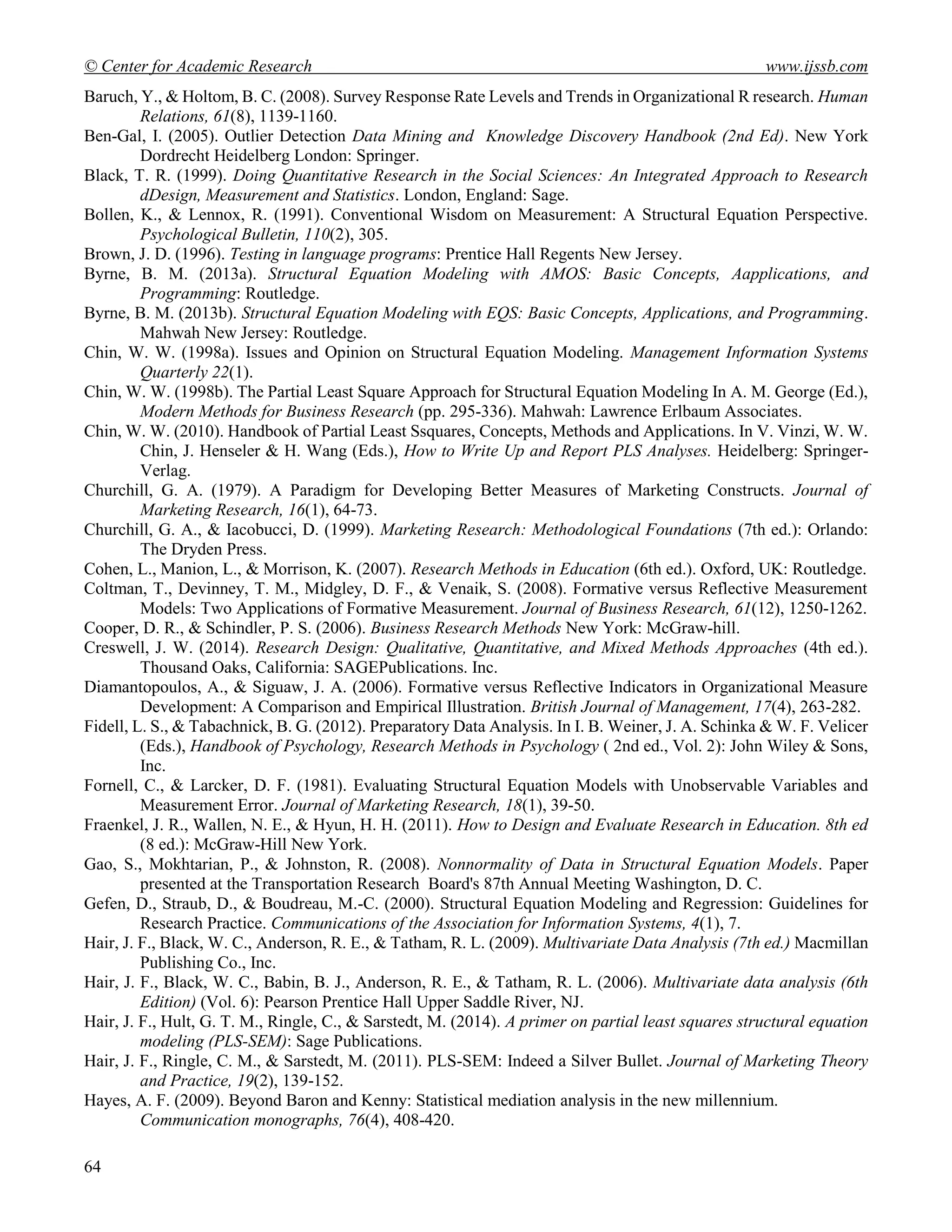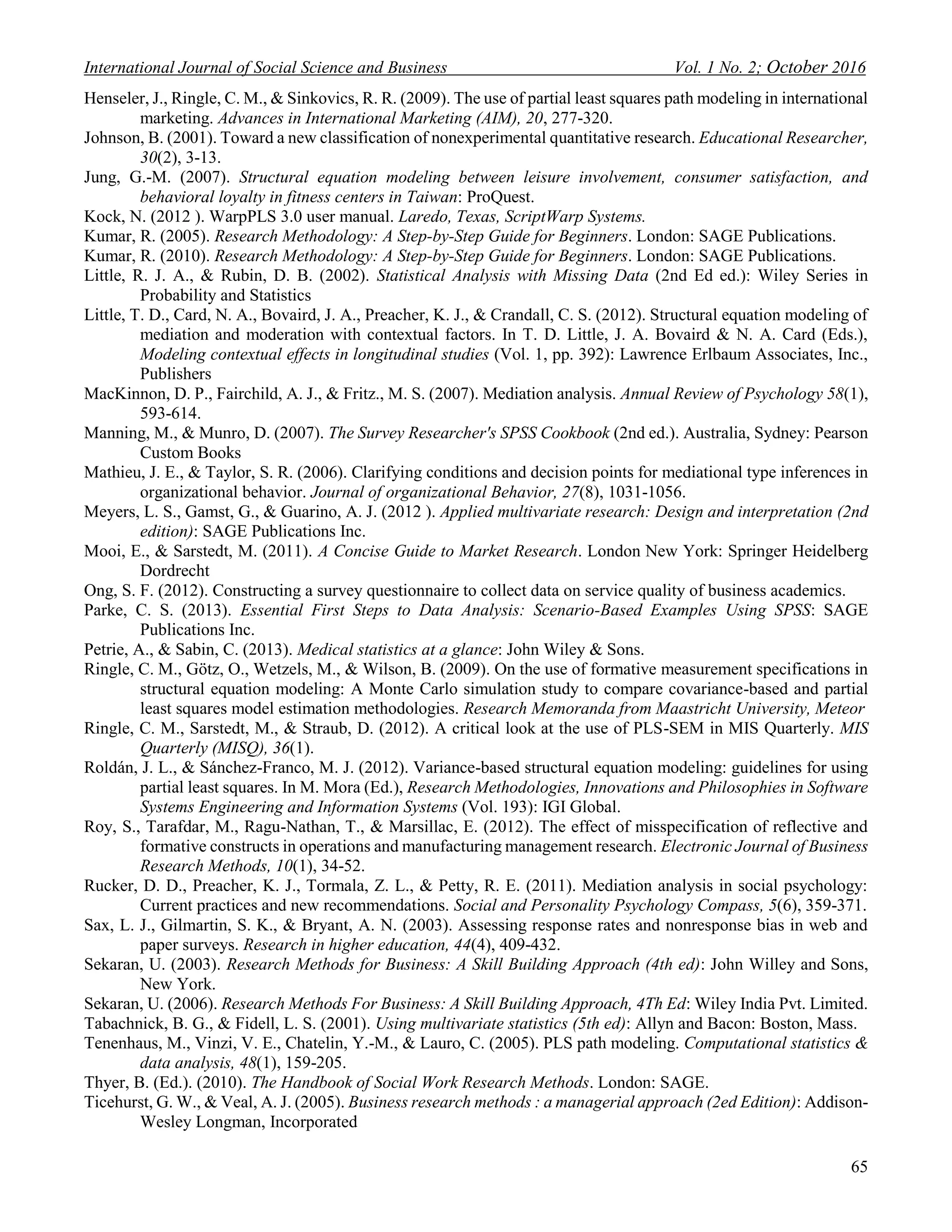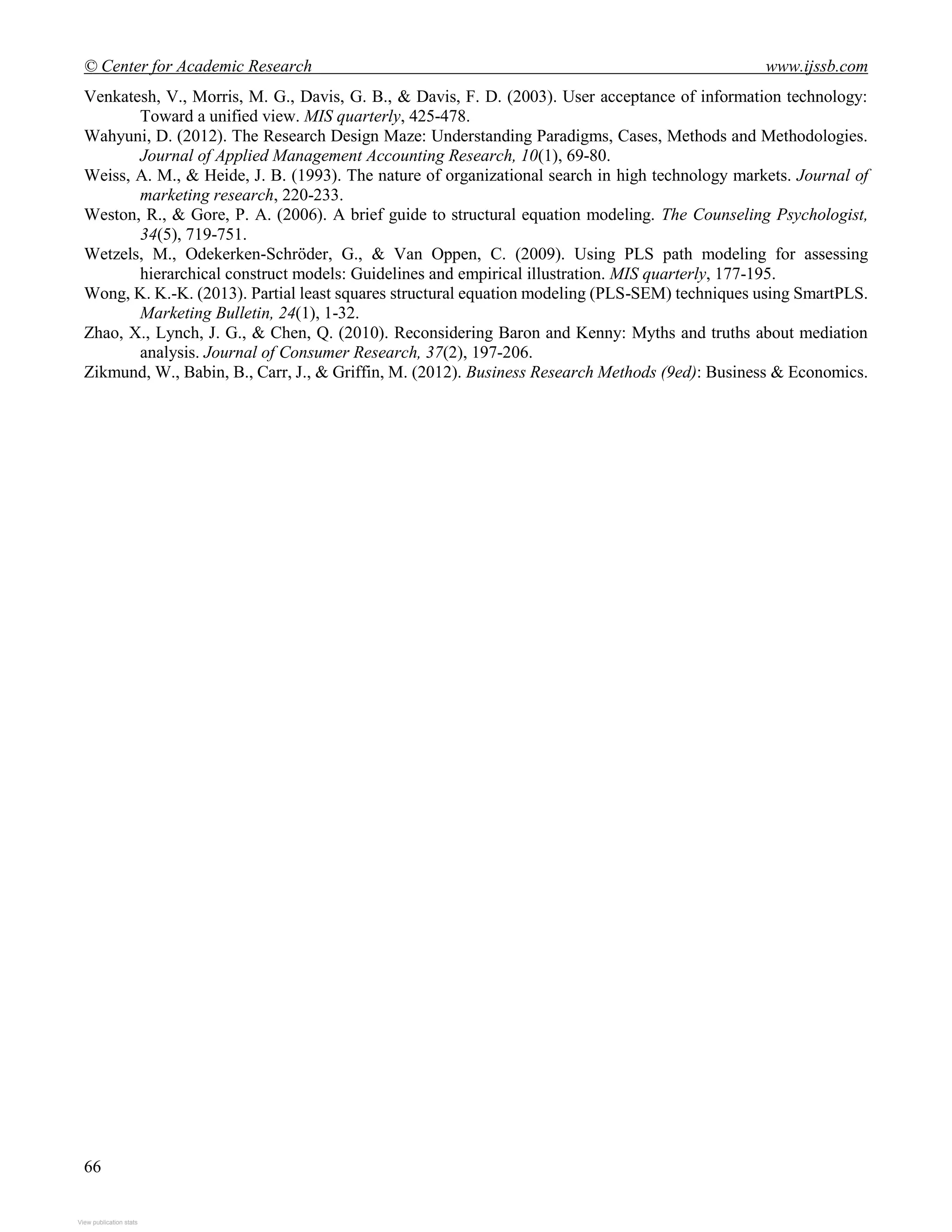This document provides an overview of the steps involved in quantitative data analysis and applying Partial Least Square Structural Equation Modeling (PLS-SEM). It discusses pretesting questionnaires, preparing raw data through editing and coding, assessing validity through measures like content validity and unidimensionality, and establishing construct validity through convergent and discriminant validity techniques. The goal is to review all the necessary steps for quantitative data analysis using SPSS and applying SEM, from preparing the data to reporting the results.
